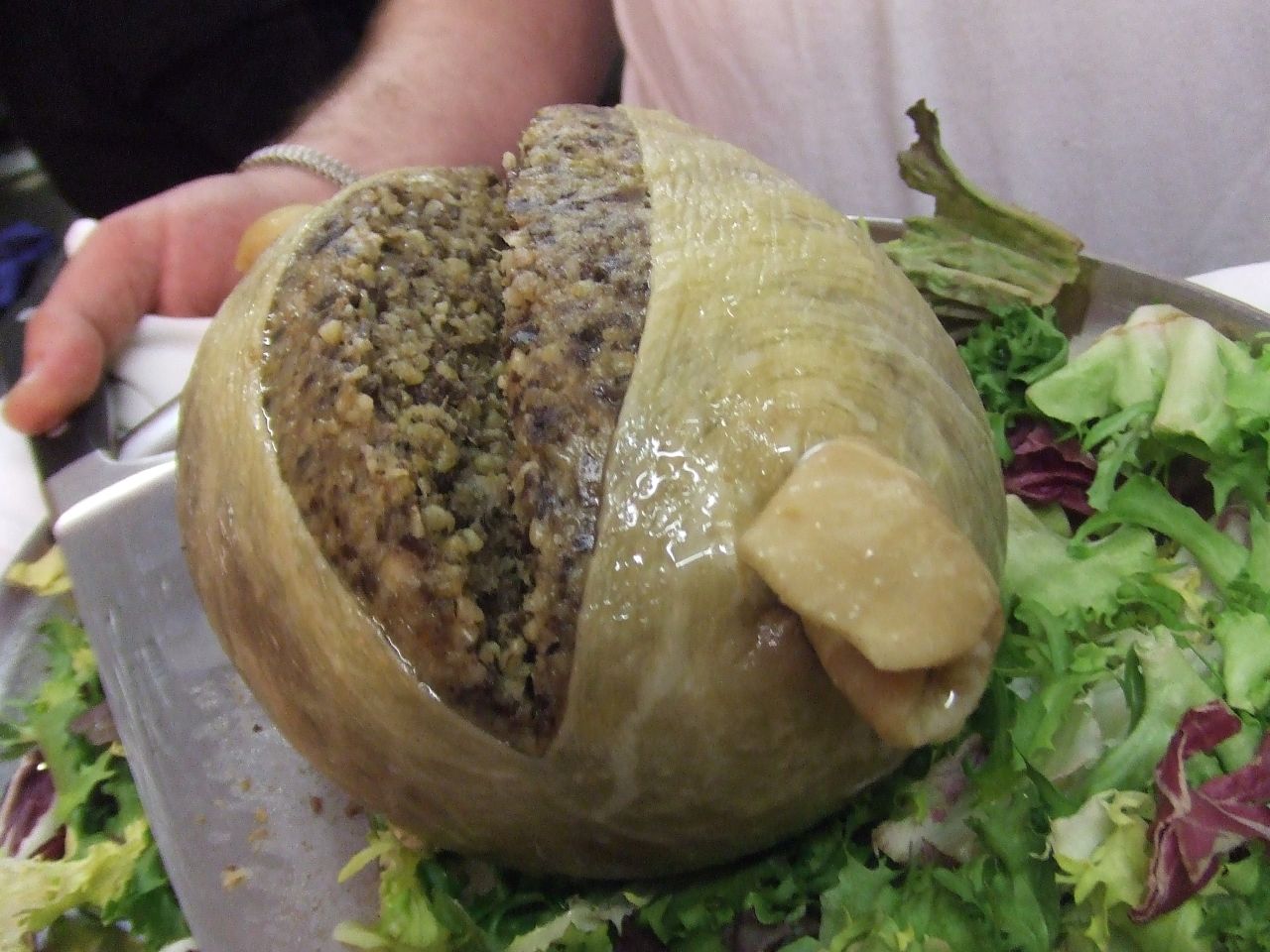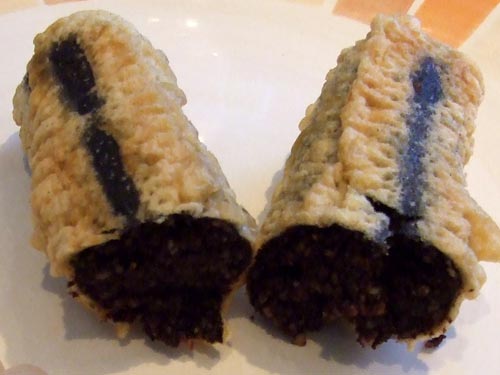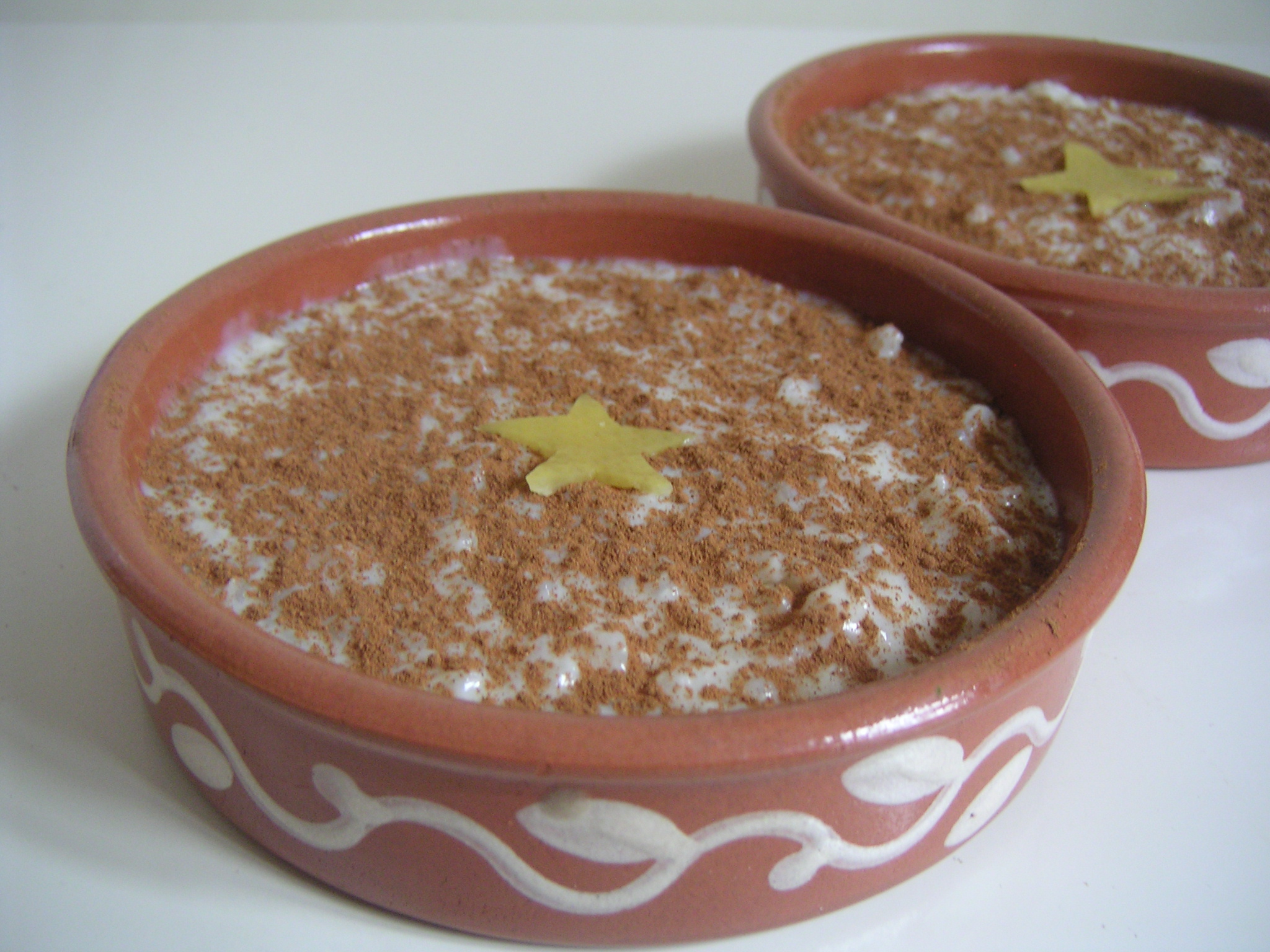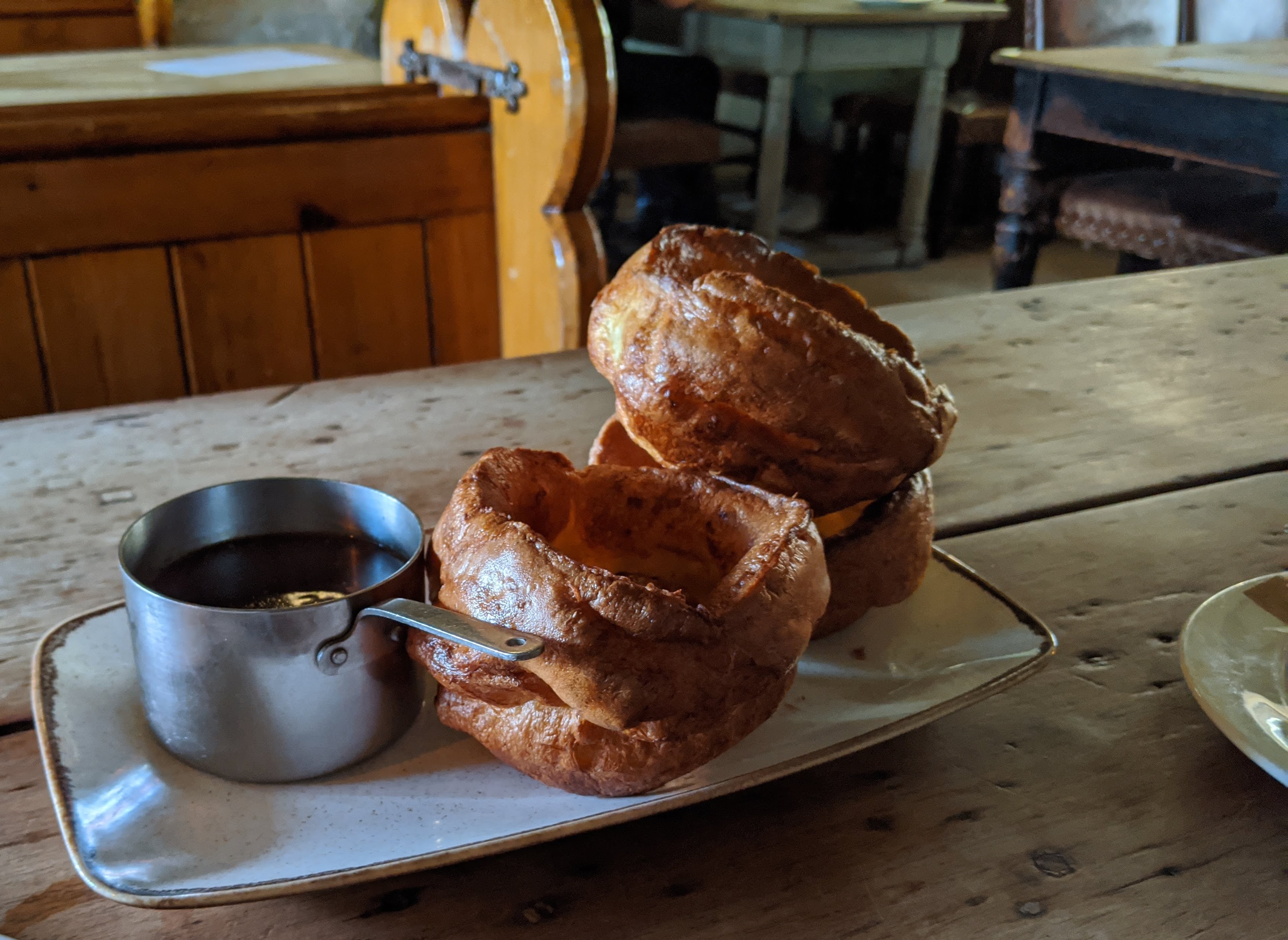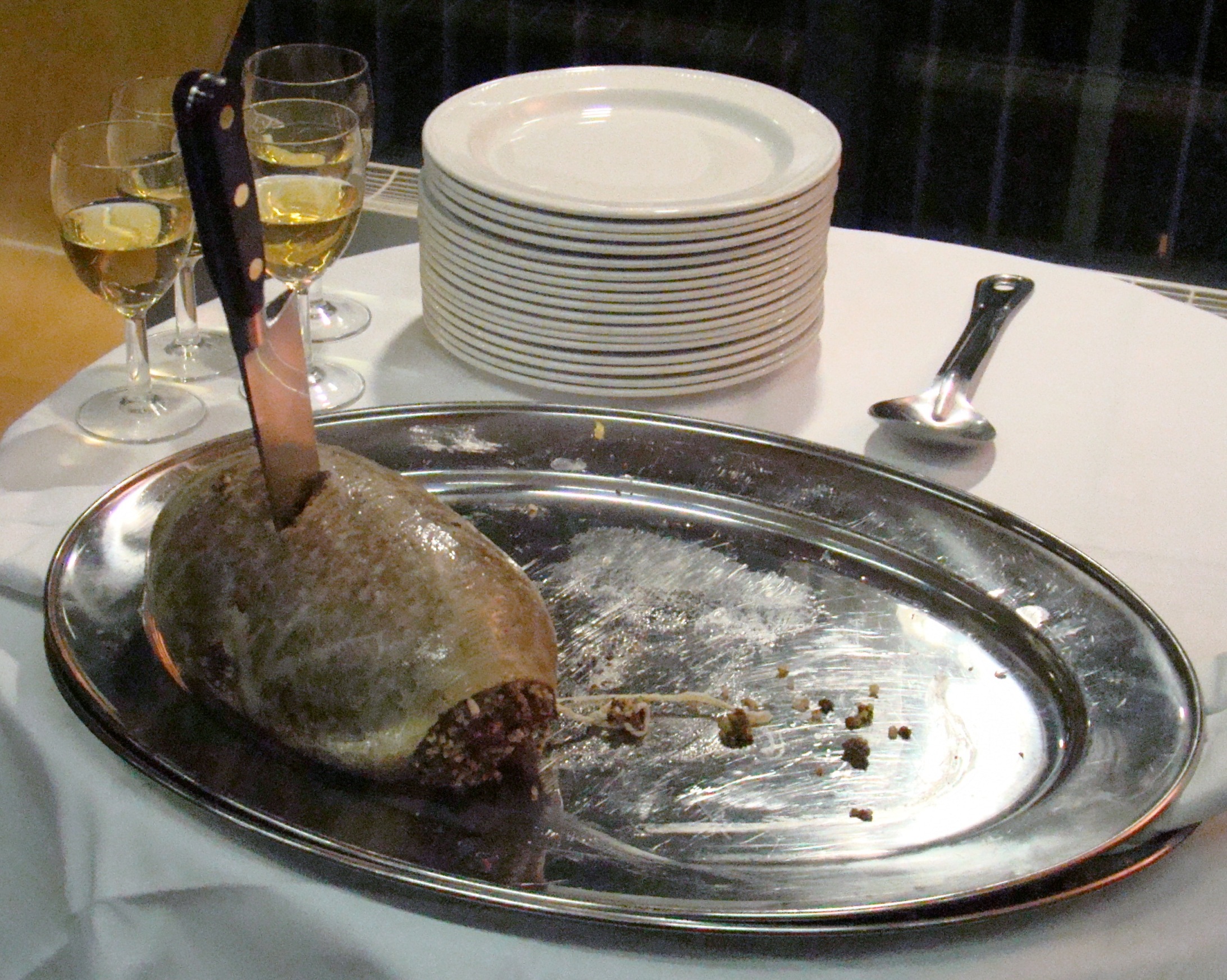|
Pudding
Pudding is a type of food which can either be a dessert served after the main meal or a Savoury (dish), savoury (salty or sweet, and spicy) dish, served as part of the main meal. In the United States, ''pudding'' means a sweet, milk-based dessert similar in consistency to egg-based custards, Bird's Custard, instant custards or a mousse, often commercially set using cornstarch, gelatin or similar coagulating agent. The modern American meaning of pudding as dessert has evolved from the original almost exclusive use of the term to describe savoury dishes, specifically those created using a process similar to that used for sausages, in which meat and other ingredients in mostly liquid form are encased and then steamed or boiled to set the contents. In the United Kingdom, Republic of Ireland, Ireland and some Commonwealth of Nations, Commonwealth countries, the word ''pudding'' is used to describe sweet and Savoury (dish), savoury dishes. Savoury puddings include Yorkshire pudding ... [...More Info...] [...Related Items...] OR: [Wikipedia] [Google] [Baidu] |
Sticky Toffee Pudding
Sticky toffee pudding, known as sticky date pudding in Australia * * * *https://www.taste.com.au/recipes/sticky-date-puddings-butterscotch-sauce/7e083052-ab1f-4d8a-b9a0-f70a8ebdad08 * * * * * * * * * * * * * * * * and New Zealand, is a British * * * * * * * * * * * * * * * * dessert consisting of a moist sponge cake covered in a toffee sauce, often served with a vanilla custard or vanilla ice cream. It is widely served in the Lake District in northwest England, where it is a culinary symbol. Composition Sticky toffee pudding has two essential components, sponge cake and toffee sauce. The first is a moist sponge cake which contains finely chopped dates. The sponge is usually light and fluffy, closer to a muffin consistency rather than a heavier traditional British sponge, and is often lightly flavoured with nuts or spices such as cloves. The toffee sauce is usually made from double cream and different dark sugars (brown sugar, jaggery, molasses sugar, muscovado, panela, pe ... [...More Info...] [...Related Items...] OR: [Wikipedia] [Google] [Baidu] |
Black Pudding
Black pudding is a distinct national type of blood sausage originating in the United Kingdom and Ireland. It is made from pork or occasionally beef Blood as food, blood, with Lard, pork fat or Suet, beef suet, and a cereal, usually oatmeal, oat groats, or barley groats. The high proportion of cereal, along with the use of certain herbs such as Mentha pulegium, pennyroyal, serves to distinguish black pudding from blood sausages eaten in other parts of the world.Jaine, T. and Davidson, A. ''The Oxford companion to food'', OUP, 2006, p.104 Etymology The word ''wikt:pudding, pudding'' is believed to derive from the French , originally from the Latin , meaning "small sausage". History and recipes Blood puddings are often considered to be one of the oldest forms of sausage. Animals are generally bled at slaughter, and as blood rapidly spoils unless prepared in some way, making a pudding with it is one of the easiest ways of ensuring it does not go to waste. While the majority of mode ... [...More Info...] [...Related Items...] OR: [Wikipedia] [Google] [Baidu] |
Bread Pudding
Bread pudding is a popular bread-based United Kingdom, British dessert. It is made with stale bread and milk or cream, generally containing egg (food), eggs, a form of fat such as oil, butter or suet and, depending on whether the pudding is sweet or savoury (dish), savory, a variety of other ingredients. Sweet bread puddings may use sugar, syrup, honey, dried fruit, and/or Nut (fruit), nuts, as well as spices such as cinnamon, nutmeg, mace (spice), mace, and/or vanilla. The bread is soaked in the liquids, mixed with the other ingredients, and baked. Some other names bread pudding goes by is "poor man's pudding", "bread and butter pudding" or just "pudding". Savory puddings like Strata (food), breakfast strata may be served as main courses, while sweet puddings are typically eaten as desserts. In other languages, its name is a translation of "bread pudding" or even just "pudding", for example "pudín" or "budín". In the Philippines, banana bread pudding is popular. In Mexico, t ... [...More Info...] [...Related Items...] OR: [Wikipedia] [Google] [Baidu] |
Rice Pudding
Rice pudding is a dish made from rice mixed with water or milk and commonly other ingredients such as sweeteners, spices, flavourings and sometimes eggs. Variants are used for either desserts or dinners. When used as a dessert, it is commonly combined with a sweetener such as sugar. Such desserts are found on many continents, especially Asia, where rice is a staple. Some variants are thickened only with the rice starch, while others include eggs, making them a kind of custard. Rice pudding around the world Rice puddings are found in nearly every area of the world. Recipes can greatly vary even within a single country. The dessert can be boiled or baked. Different types of pudding vary depending on preparation methods and the selected ingredients. The following ingredients are usually found in rice puddings: * rice; white rice (usually short-grain, but can also be long-grain, broken rice, basmati, or jasmine rice), brown rice, or black rice * milk (whole milk, plant milk, cream ... [...More Info...] [...Related Items...] OR: [Wikipedia] [Google] [Baidu] |
Yorkshire Pudding
Yorkshire pudding is a baked pudding made from a batter of eggs, flour, and milk or water. A common English side dish, it is a versatile food that can be served in numerous ways depending on its ingredients, size, and the accompanying components of the meal. As a first course, it can be served with onion gravy. For a main course, it may be served with meat and gravy (historically roast beef but in recent years with other meats), as part of the traditional Sunday roast, but can also be filled with foods such as bangers and mash to make a meal. Sausages can be added to make toad in the hole. In some parts of England, (especially the Midlands) the Yorkshire pudding can be eaten as a dessert, with a sweet sauce. The 18th-century cookery writer Hannah Glasse was the first to use the term "Yorkshire pudding" in print. Yorkshire puddings are similar to Dutch baby pancakes, and to popovers, an American light roll made from an egg batter. History When wheat flour began to co ... [...More Info...] [...Related Items...] OR: [Wikipedia] [Google] [Baidu] |
Suet Pudding
A suet pudding is a boiled, steamed or baked pudding made with wheat flour and suet (raw, hard fat of beef or mutton found around the kidneys), often with breadcrumb, dried fruits such as raisins, other preserved fruits, and spices. The British term pudding usually refers to a dessert or sweet course, but suet puddings may be savoury. Many variations are strongly associated with British cuisine. Recipes vary greatly and can be desserts or savoury courses. They are typically boiled or steamed, though some baked variations and recipes adapted for microwave ovens exist. Modern recipes may substitute butter or vegetable shortening for the eponymous suet. Examples include spotted dick, Christmas pudding, treacle pudding, clootie dumpling, jam roly-poly and many others. Savoury versions include rabbit, chicken, game and steak and kidney pudding. The Sussex pond pudding and the Paignton pudding are local variations of suet puddings. History The suet pudding dates back to at le ... [...More Info...] [...Related Items...] OR: [Wikipedia] [Google] [Baidu] |
Steak And Kidney Pudding
Steak and kidney pudding is a traditional English main course in which beef steak and beef, veal, pork or lamb kidney are enclosed in suet pastry and slow-steamed on a stovetop. History and ingredients Steak puddings (without kidney) were part of British cuisine by the 18th century.Davidson, p. 754 Hannah Glasse (1751) gives a recipe for a suet pudding with beef-steak (or mutton). Nearly a century later, Eliza Acton (1846) specifies rump steak for her "Small beef-steak pudding" made with suet pastry, but, like her predecessor, does not include kidney. An early mention of steak and kidney pudding appears in ''Bell's New Weekly Messenger'' on 11 August 1839: According to the cookery writer Jane Grigson, the first published recipe to include kidney with the steak in a suet pudding was in 1859 in Mrs Beeton's ''Household Management''.Grigson, p. 243 Beeton had been sent the recipe by a correspondent in Sussex in south-east England, and Grigson speculates that it was until then ... [...More Info...] [...Related Items...] OR: [Wikipedia] [Google] [Baidu] |
Dessert
Dessert is a course (food), course that concludes a meal; the course consists of sweet foods, such as cake, biscuit, ice cream, and possibly a beverage, such as dessert wine or liqueur. Some cultures sweeten foods that are more commonly umami, savory to create desserts. In some parts of the world, there is no tradition of a dessert course to conclude a meal. Historically, the dessert course consisted entirely of foods 'from the storeroom' (''de l’office''), including fresh, stewed, preserved, and dried fruits; nuts; cheese and other dairy dishes; Cookie, dry biscuits (cookies) and wafers; and ices and Ice cream, ice creams. Sweet dishes from the kitchen, such as freshly prepared pastries, meringues, custards, puddings, and baked fruits, were served in the Entremet, entremets course, not in the dessert course. By the 20th century, though, sweet entremets had come to be included among the desserts. The modern term ''dessert'' can apply to many sweets, including fruit, custard ... [...More Info...] [...Related Items...] OR: [Wikipedia] [Google] [Baidu] |
Sausage
A sausage is a type of meat product usually made from ground meat—often pork, beef, or poultry—along with salt, spices and other flavourings. Other ingredients, such as grains or breadcrumbs, may be included as fillers or extenders. When used as an uncountable noun, the word ''sausage'' can refer to the loose sausage meat, which can be used loose, formed into patties, or stuffed into a casing. When referred to as "a sausage", the product is usually cylindrical and enclosed in a casing. Typically, a sausage is formed in a casing traditionally made from intestine, but sometimes from synthetic materials. Sausages that are sold raw are cooked in many ways, including pan-frying, broiling and barbecuing. Some sausages are cooked during processing, and the casing may then be removed. Sausage making is a traditional food preservation technique. Sausages may be preserved by curing, drying (often in association with fermentation or culturing, which can contribute to pres ... [...More Info...] [...Related Items...] OR: [Wikipedia] [Google] [Baidu] |
Suet
Suet ( ) is the raw, hard fat of beef, lamb or mutton found around the loins and kidneys. Suet has a melting point of between and solidification (or congelation) between . Its high smoke point makes it ideal for deep frying and pastry production. The primary use of suet is in tallow, although it is also used as an ingredient in cooking, especially in traditional baked puddings, such as British Christmas pudding. Suet is rendered into tallow by melting and extended simmering, followed by straining, then cooling. The process may be repeated to refine the product. Etymology The word ''suet'' is derived from Anglo-Norman , from Old French , from Latin (' tallow', 'grease', 'hard animal fat'). ''Sebum'' is from the Proto-Indo-European root ('pour out, trickle'), so it shares a root with ''sap'' and ''soap''. Use In cuisine As suet is the fat from around the kidneys, the connective tissue, blood and other non-fat content must be removed. It must be refrigerated ... [...More Info...] [...Related Items...] OR: [Wikipedia] [Google] [Baidu] |
Haggis
Haggis ( ) is a savoury pudding containing sheep's offal, pluck (heart, liver, and lungs), Mincing, minced with chopped onion, oatmeal, suet, spices, and salt, mixed with Stock (food), stock, and cooked while traditionally encased in the animal's stomach though now an artificial sausage casing, casing is often used instead. According to the 2001 English edition of the ''Larousse Gastronomique'': "Although its description is not immediately appealing, haggis has an excellent nutty texture and delicious savoury flavour". It is believed that food similar to haggis — perishable offal quickly cooked inside an animal's stomach, all conveniently available after a hunt — was eaten from ancient times. Although the name "hagws" or "hagese" was first recorded in England c. 1430, the dish is considered traditionally of Scottish origin. It is even the national dish as a result of Scots poet Robert Burns' poem "Address to a Haggis" of 1786. Haggis is traditionally served with "rutabaga, ... [...More Info...] [...Related Items...] OR: [Wikipedia] [Google] [Baidu] |
